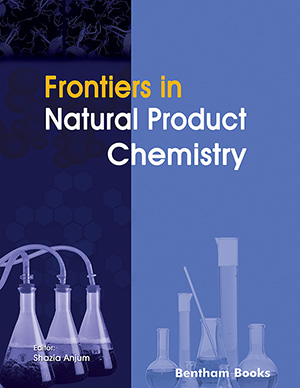Abstract
Background: Breast cancer (BC) is a leading cause of cancer-related deaths in women next to skin cancer. Estrogen receptors (ERs) play an important role in the progression of BC. Current anticancer agents have several drawbacks such as serious side effects and the emergence of resistance to chemotherapeutic drugs. As coumarins possess minimum side effects along with multidrug reversal activity, it has a tremendous ability to regulate a diverse range of cellular pathways that can be explored for selective anticancer activity.
Objectives: Synthesis and evaluation of new coumarin analogues for anti-proliferative activity on human breast cancer cell line MCF-7 along with exploration of binding interaction of the compounds for ER-α target protein by molecular docking.
Methods: In this study, the anti-proliferative activity of C-3 substituted coumarins analogues (1-17) has been evaluated against estrogen receptor-positive MCF-7 breast cancer cell lines. Molecular interactions and ADME study of the compounds were analyzed by using Schrodinger software.
Results: Among the synthesized analogues, 12 and 13 show good antiproliferative activity with IC50 values 1 and 1.3 μM, respectively. Molecular docking suggests a remarkable binding pose of all the seventeen compounds. Compounds 12 and 13 were found to exhibit a docking score of -4.10 kcal/mol and -4.38 kcal/mol, respectively.
Conclusion: Compounds 12 and 13 showed the highest activity followed by 1 and 5. ADME properties of all compounds were in the acceptable range. The active compounds can be taken for lead optimization and mechanistic interventions for their in vivo study in the future.
Keywords: Coumarin, anticancer, breast cancer, estrogen receptor, molecular docking, ADME.
[http://dx.doi.org/10.1016/j.ejmech.2018.02.065] [PMID: 29505935]
[http://dx.doi.org/10.3322/caac.21551] [PMID: 30620402]
[http://dx.doi.org/10.1016/S0140-6736(89)91551-1] [PMID: 2571815]
[http://dx.doi.org/10.1016/j.canlet.2018.04.023] [PMID: 29702197]
[http://dx.doi.org/10.1002/ijc.31258] [PMID: 29330856]
[http://dx.doi.org/10.1021/acs.chemrestox.7b00237] [PMID: 28985473]
[http://dx.doi.org/10.1016/j.coph.2018.04.009] [PMID: 29719270]
[http://dx.doi.org/10.4172/pharmaceutical-sciences.1000335]
[http://dx.doi.org/10.2174/1871520618666171229185926] [PMID: 29298657]
[http://dx.doi.org/10.1016/j.ejmech.2015.07.010] [PMID: 26188907]
[http://dx.doi.org/10.1016/j.ejmech.2016.03.087] [PMID: 27155469]
[http://dx.doi.org/10.1039/a801724g]
[http://dx.doi.org/10.1080/00397910600640289]
[http://dx.doi.org/10.1016/0022-1759(94)90034-5] [PMID: 8083535]
[PMID: 17718933]
[http://dx.doi.org/10.1016/0022-1759(83)90303-4] [PMID: 6606682]
[http://dx.doi.org/10.1038/bjc.1987.190] [PMID: 3663476]
[http://dx.doi.org/10.1210/mend-2-10-886] [PMID: 3185565]
[http://dx.doi.org/10.1002/(SICI)1097-0215(19980413)76:2<259::AID-IJC14>3.0.CO;2-7] [PMID: 9537589]
[http://dx.doi.org/10.1021/jm030644s] [PMID: 15027866]
[http://dx.doi.org/10.1007/s10822-009-9281-4] [PMID: 19495993]
[http://dx.doi.org/10.1002/prot.20149] [PMID: 15340911]
[http://dx.doi.org/10.1007/s10822-013-9644-8] [PMID: 23579614]
[http://dx.doi.org/10.1038/nrd1032] [PMID: 12612645]
[PMID: 26693409]
[http://dx.doi.org/10.1016/j.cclet.2013.04.046]
[http://dx.doi.org/10.1016/j.bmcl.2013.12.095] [PMID: 24418772]































